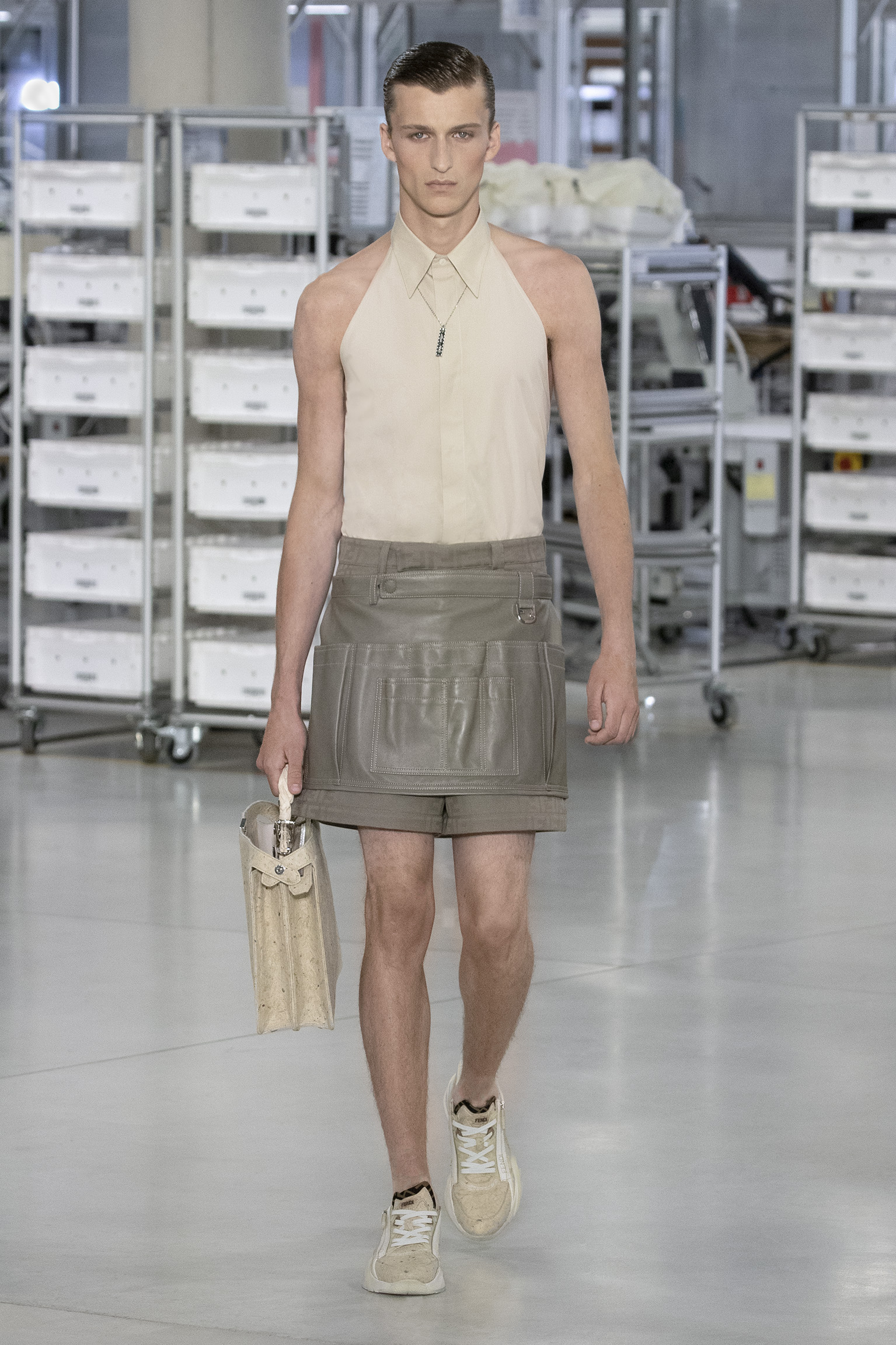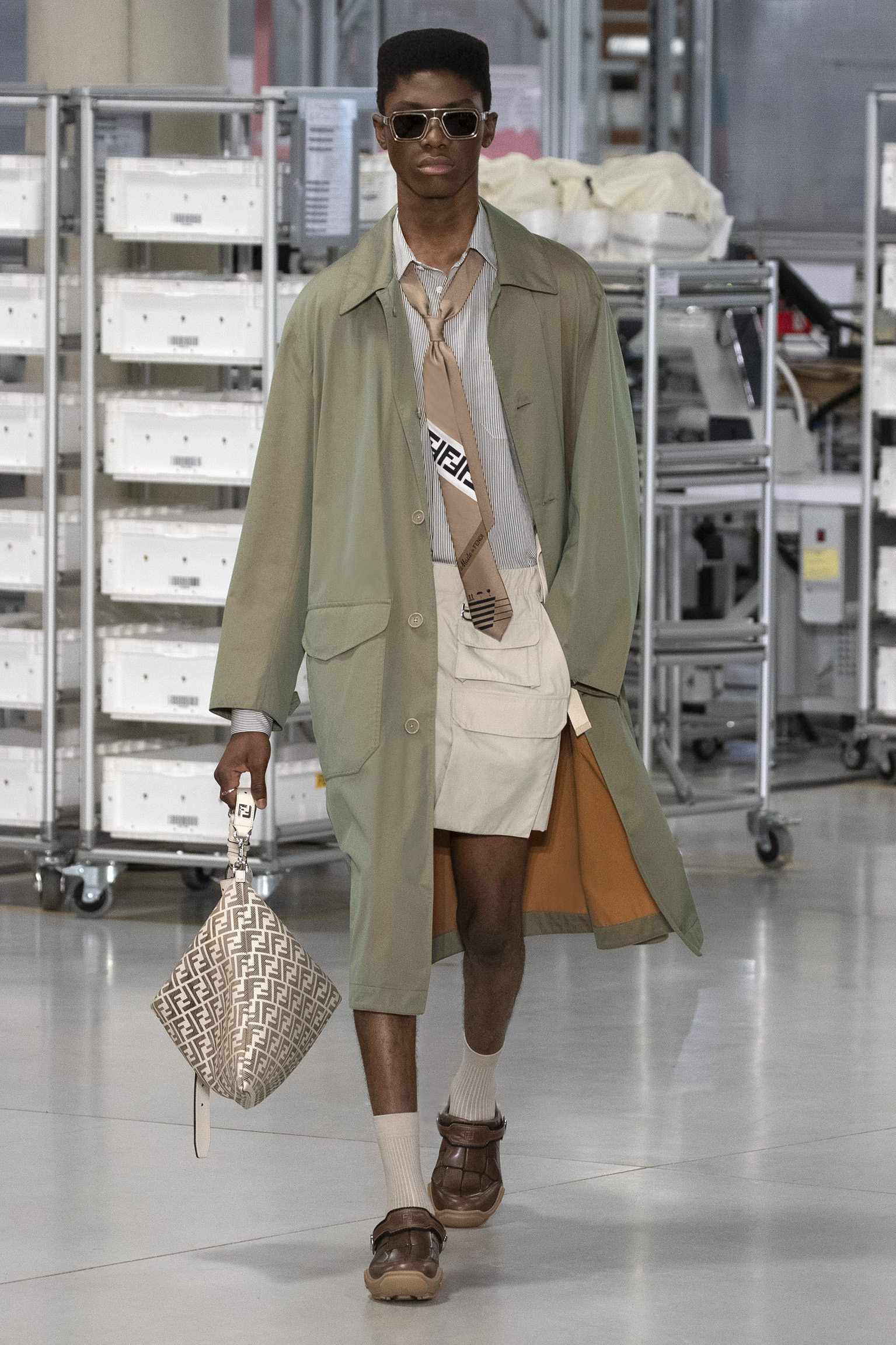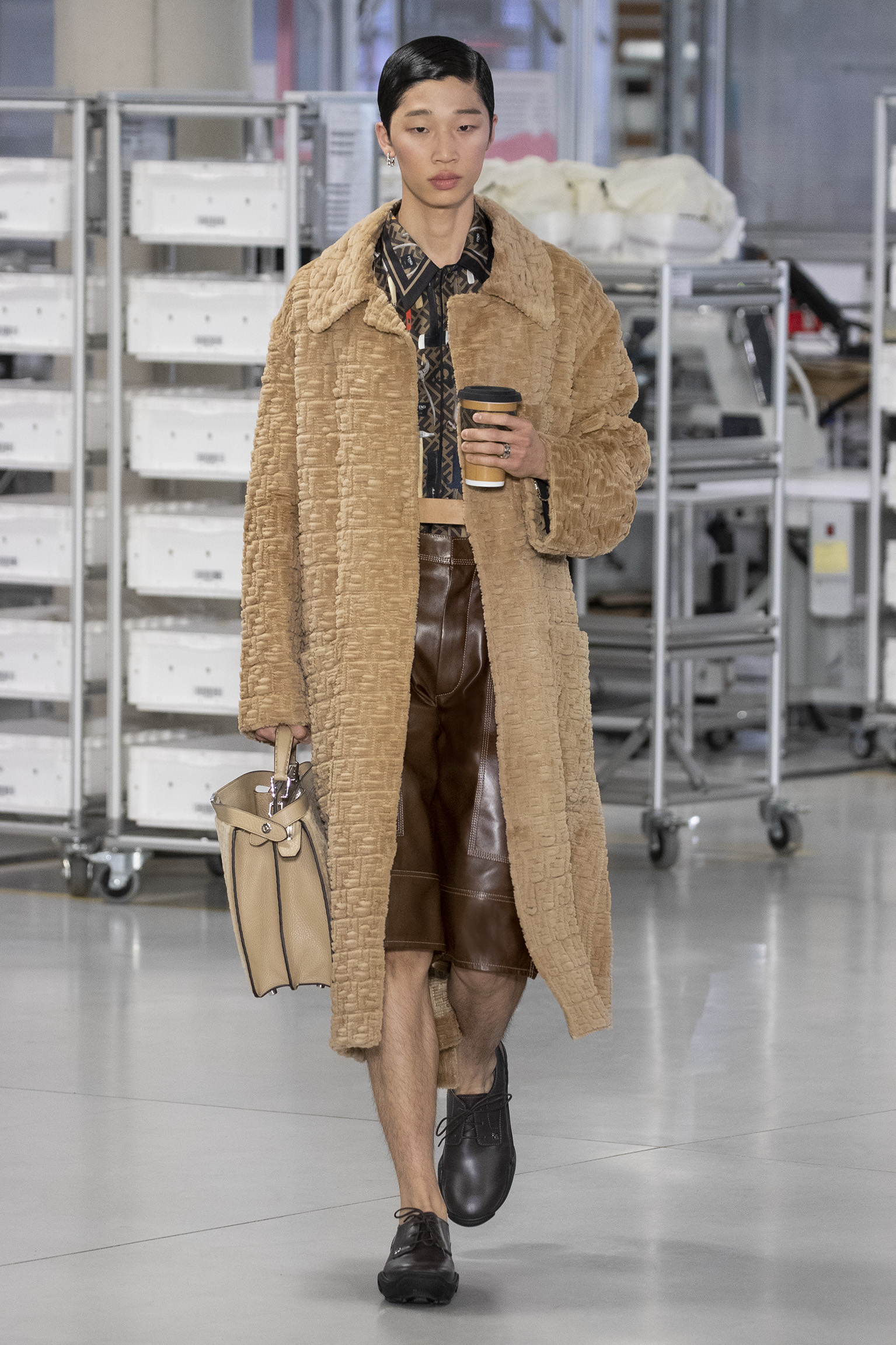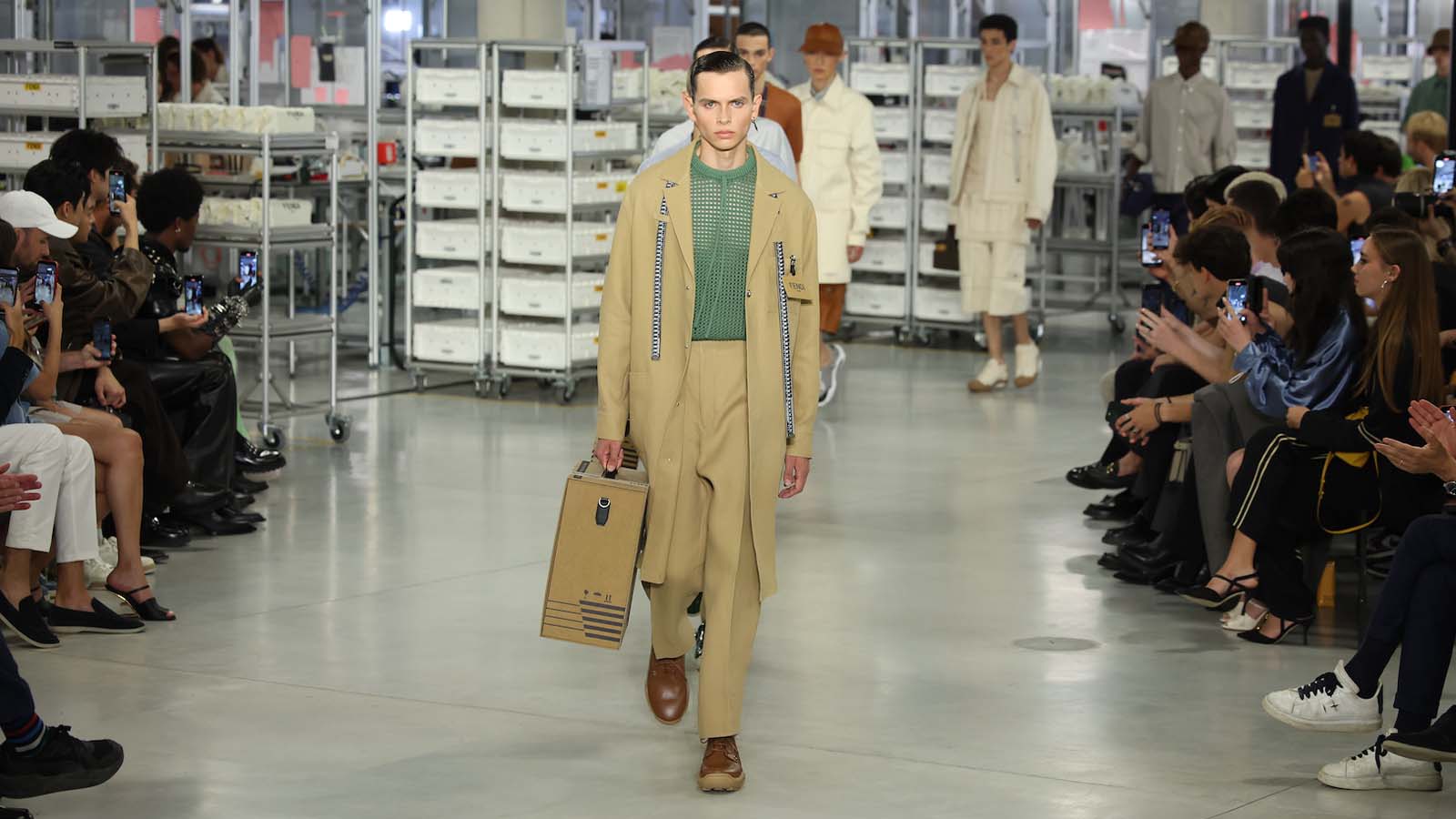
The factory floor provided the inspiration for – and setting of – Fendi’s latest menswear collection, shown this season not at Milan Fashion Week but at the Pitti Uomo menswear fair in Florence. Taking place in the newly inaugurated Fendi Factory located outside of the city in the rolling Tuscan hills of Capannuccia, artistic director of menswear and accessories Silvia Venturini Fendi said it was a loving ode to craft and the atelier which here creates the house’s handbags and leather goods.
Guests were transported by coach to the 14,000 sq m complex, which was designed by Milan-based studio Piuarch alongside Fendi’s in-house architects. Outside, the discreet building is notable for its vast rooftop garden planted with native flowers, made to fade into the landscape beyond; inside, the gleaming glass and concrete space was alive with activity as the various craftspeople continued their work while attendees took their seats on the main factory floor.
Fendi at Pitti Uomo 104
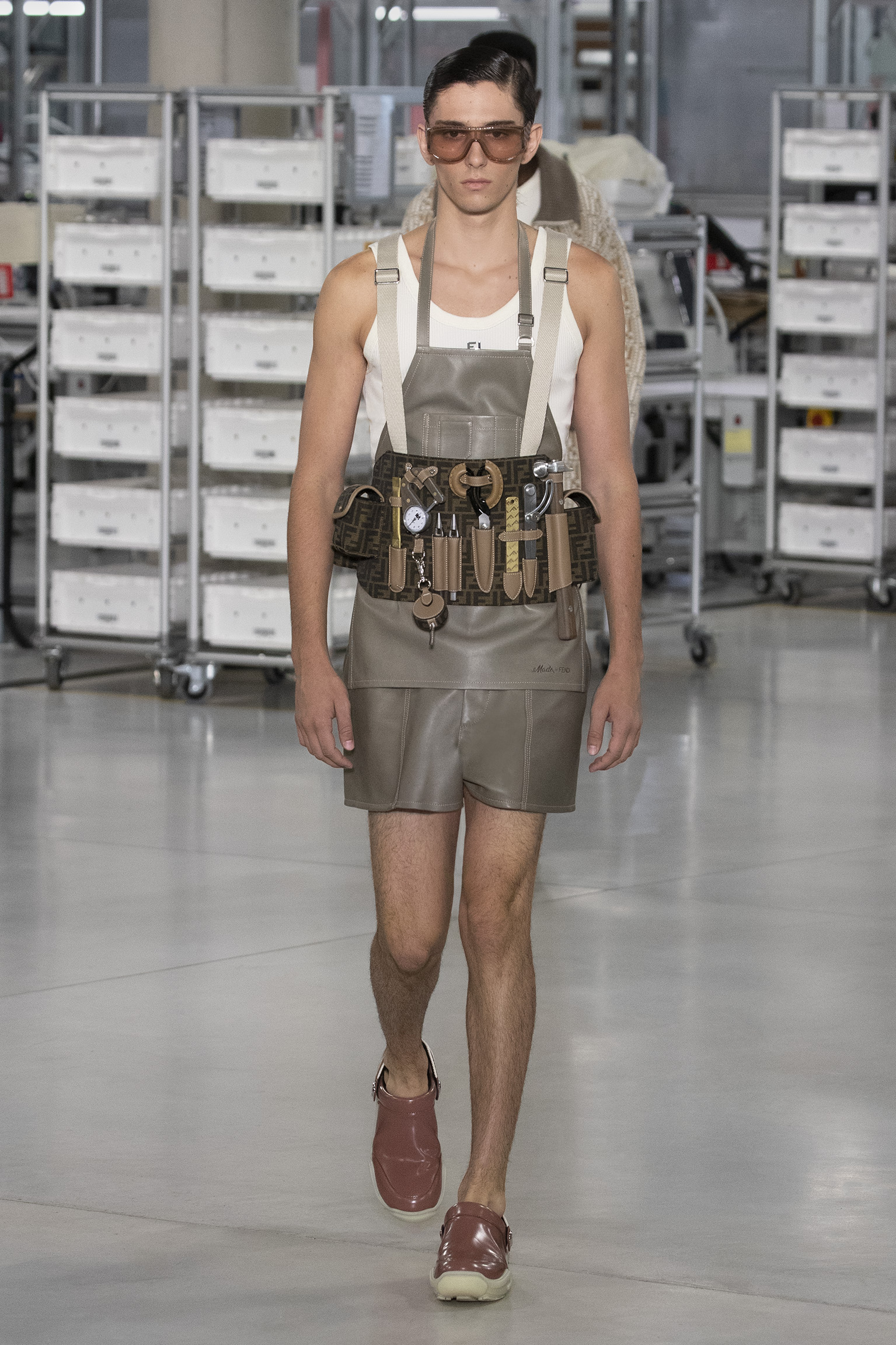
Prior to the show, Silvia Venturini Fendi – who famously designed perhaps the house’s most recognised accessory, the ‘Baguette’ handbag – noted that it was a place of particular personal importance, ‘the pulsing heart of Fendi, a place symbolic of creation, where development, innovation, craftsmanship training and production are reunited under the same roof’. The locale is also resonant with the house’s history; close to a century ago, the designer’s grandmother Adele Fendi travelled to Florence from Rome to learn the craft of leatherwork.
As the artisans continued to slice, stitch and hammer – one workstation was constructing a series of hot-pink bucket bags – models wove their way through the main atrium in pieces that playfully nodded to the factory surroundings. Looks were adorned with measuring tapes, leather aprons, monogram-branded toolbelts, Fendi name badges and clog-like footwear; other pieces riffed on traditional workwear, like a pair of leather carpenter jeans or boxy chore-style jackets. Another nod to construction came in an elongated shirt decorated with the dashes and cut lines of tailoring pattern pieces. ‘A metafictional reflection on process,’ explained the accompanying notes.
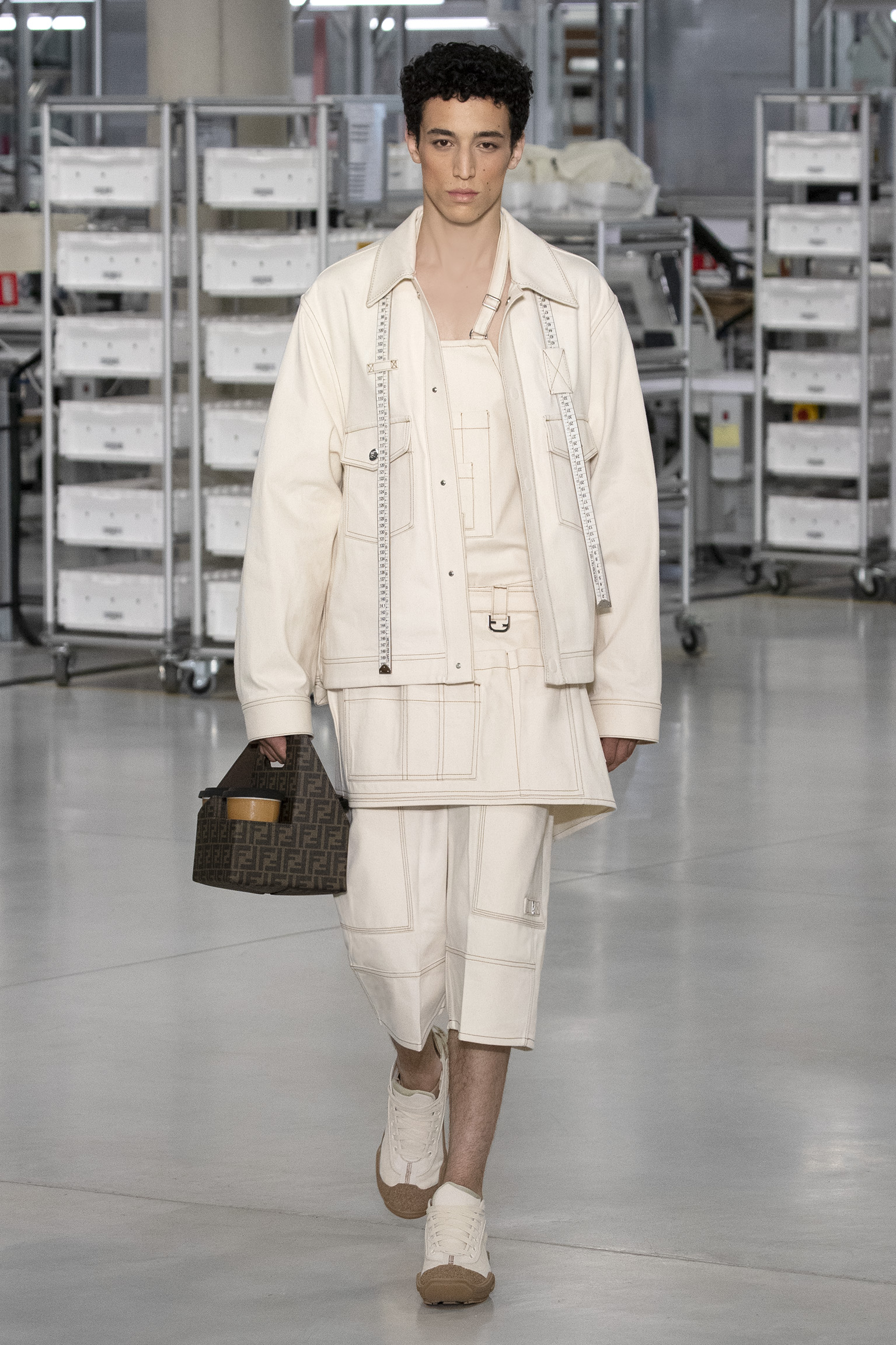
Fendi described the look as ‘corporate artisan’, a reference, the brand said, to the collection’s juxtaposition of utilitarianism and elegance. More literally, this meant elements of office wear – subverted in Silvia Venturini Fendi’s typically irreverent style – like boardroom-style shirting cut away at the sleeve and left open to expose the back, loosened silk ties, or a series of beautifully cut double-button blazers (several of the models also carried takeout Fendi coffee cups, as if en route to the office). The various handbags – including new versions of the ‘Baguette’ and ’Peekaboo’ in vegetable-dyed leathers – had all been created by craftspeople in the room.
Earlier in the day, the show had taken place for factory staff; at the close of the second show of the day, they downed tools to join Silvia Venturini Fendi on the runway to take her bow. Just after 7pm, it marked the end of the working day – as the runway cleared, guests and artisans alike funnelled upwards to the factory’s bucolic rooftop garden where dinner was served under the setting Tuscan sun.
